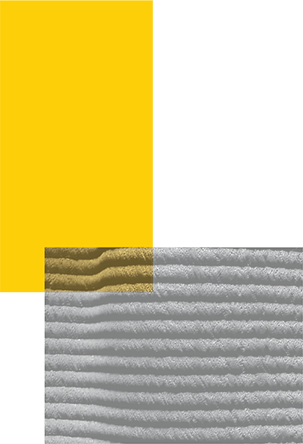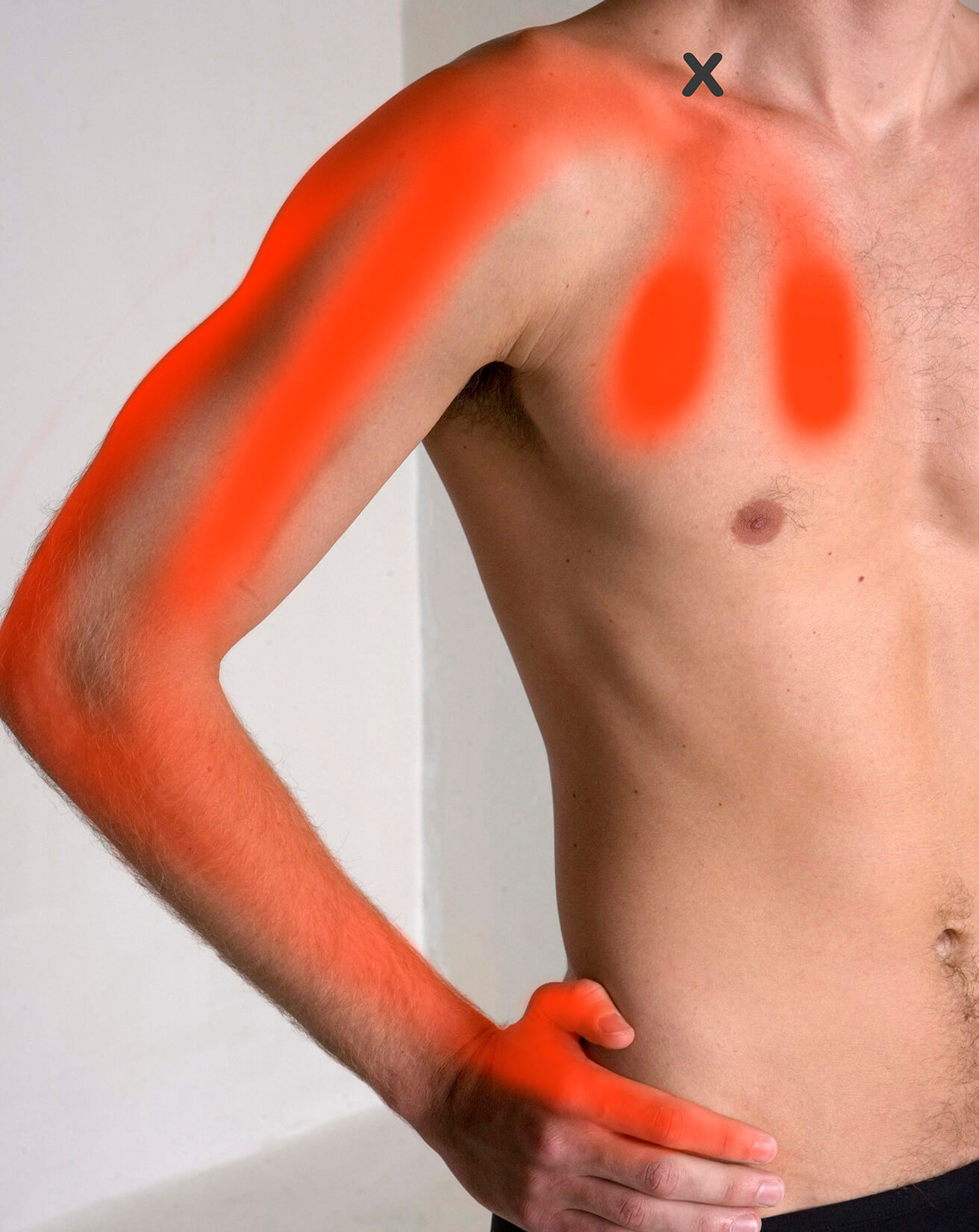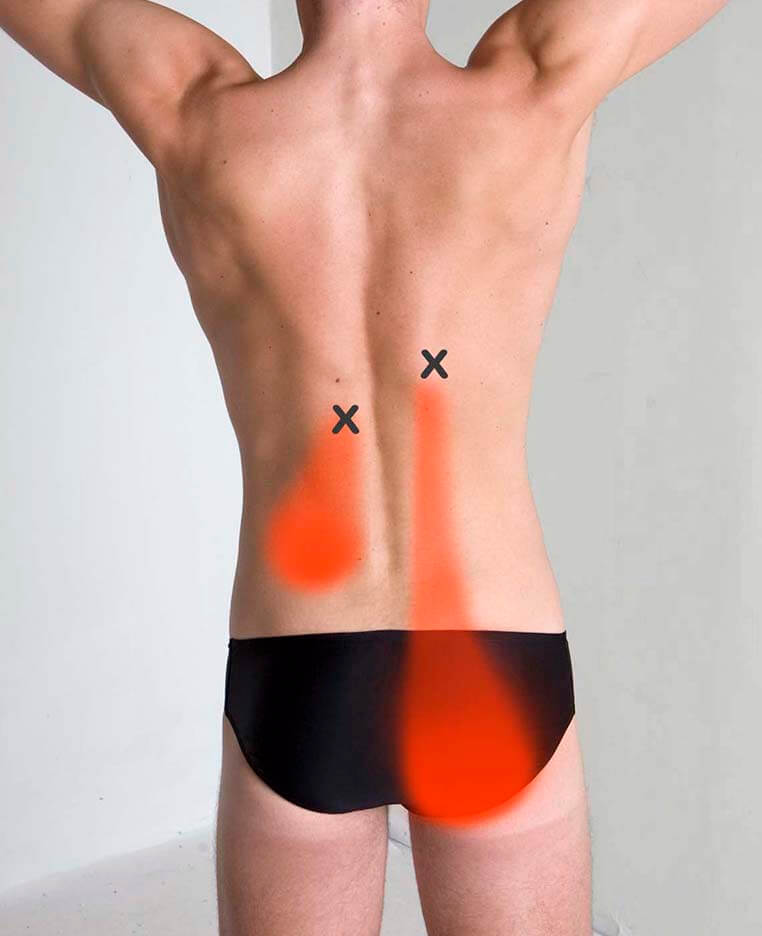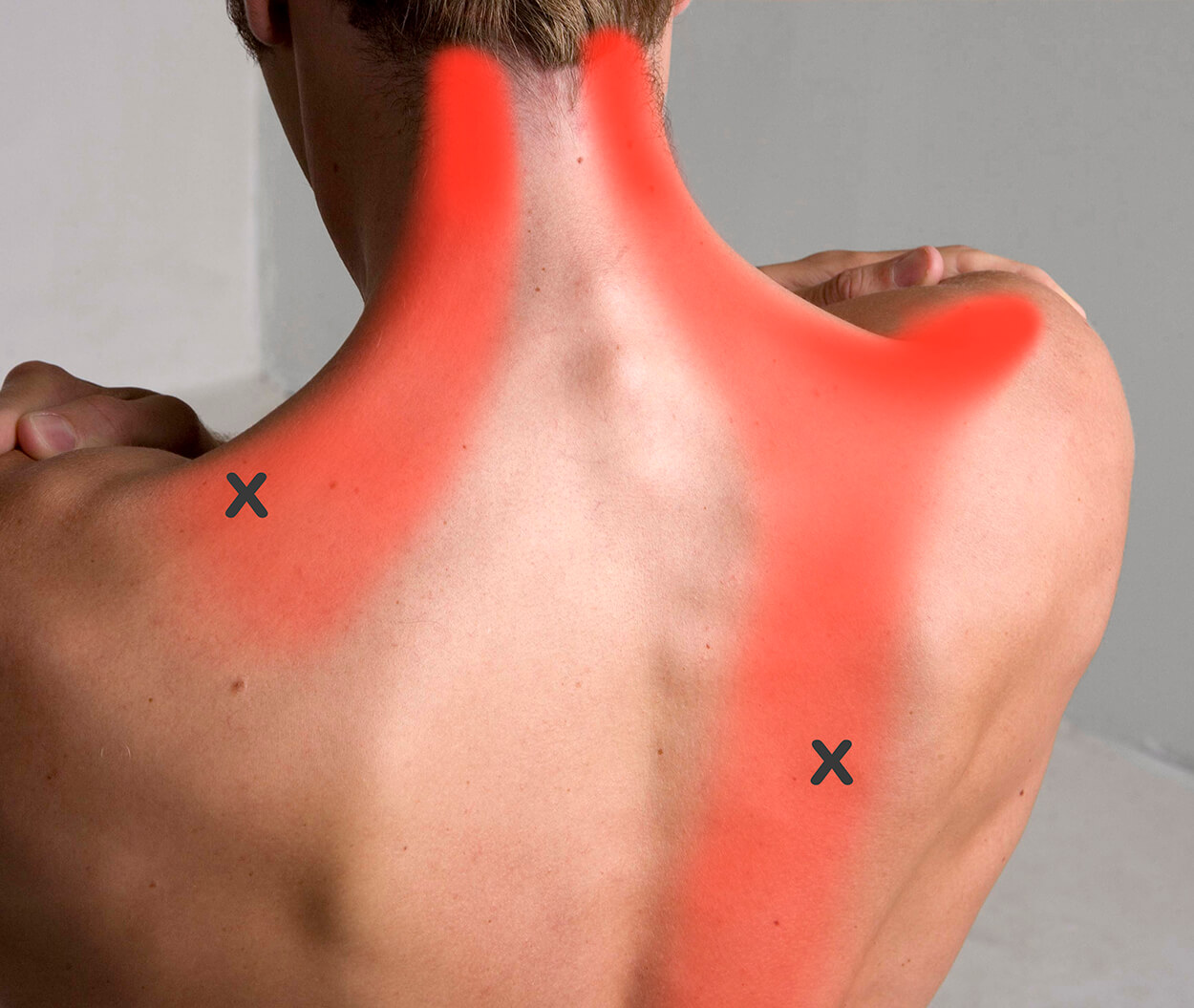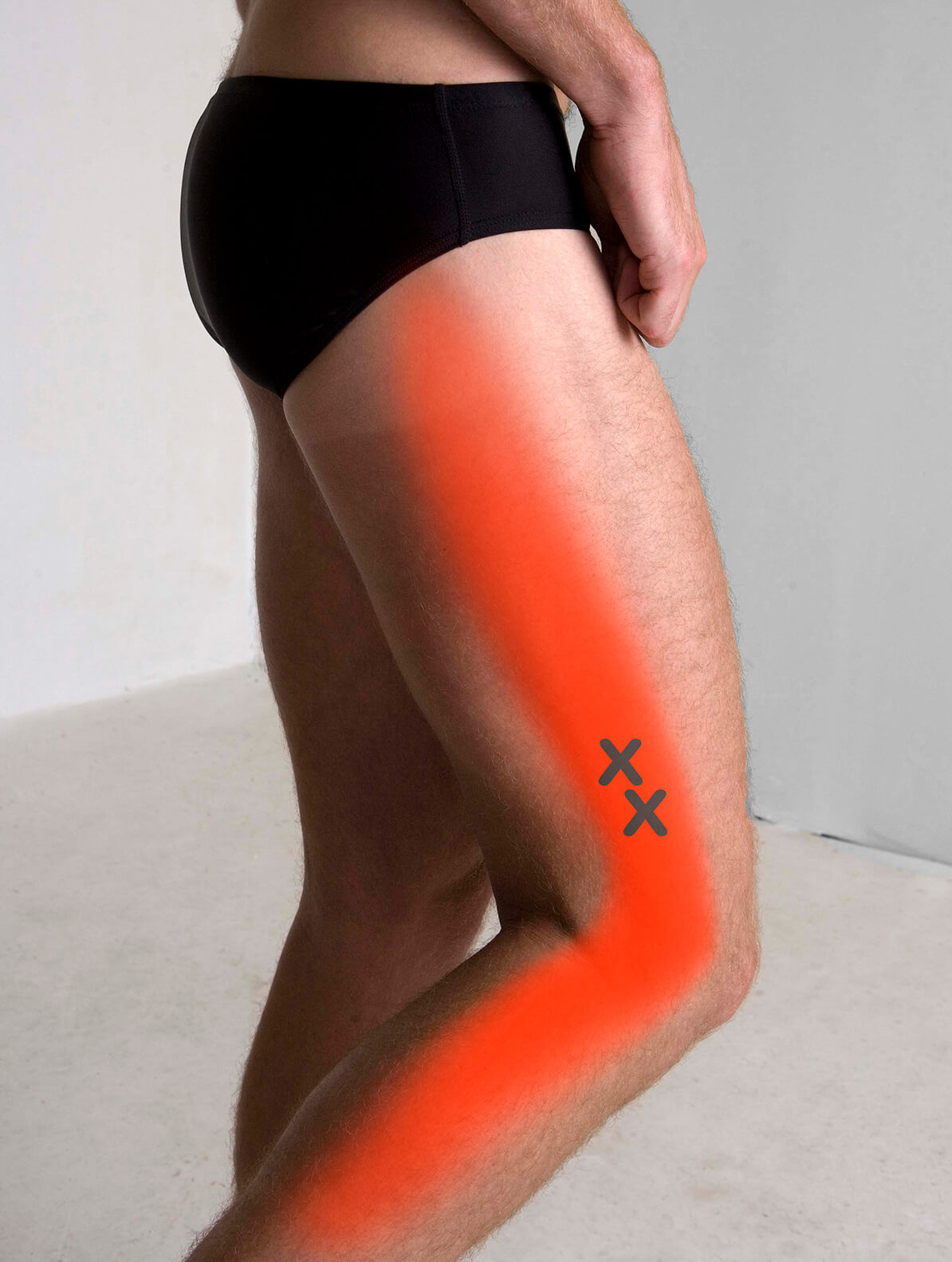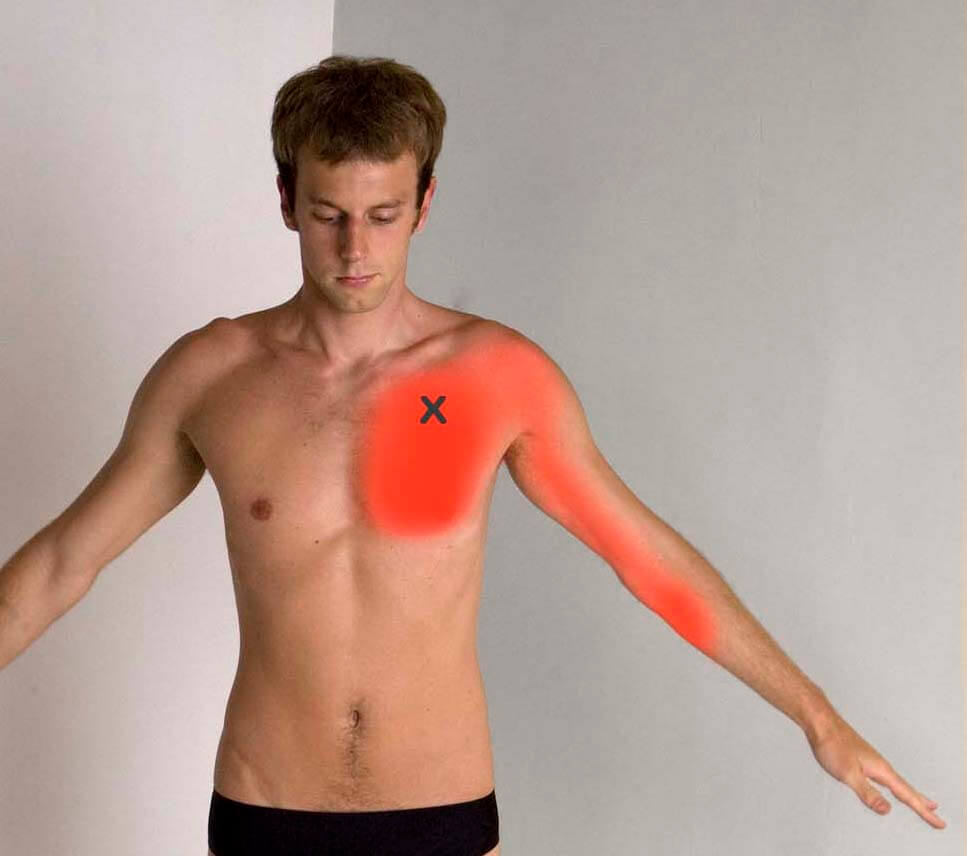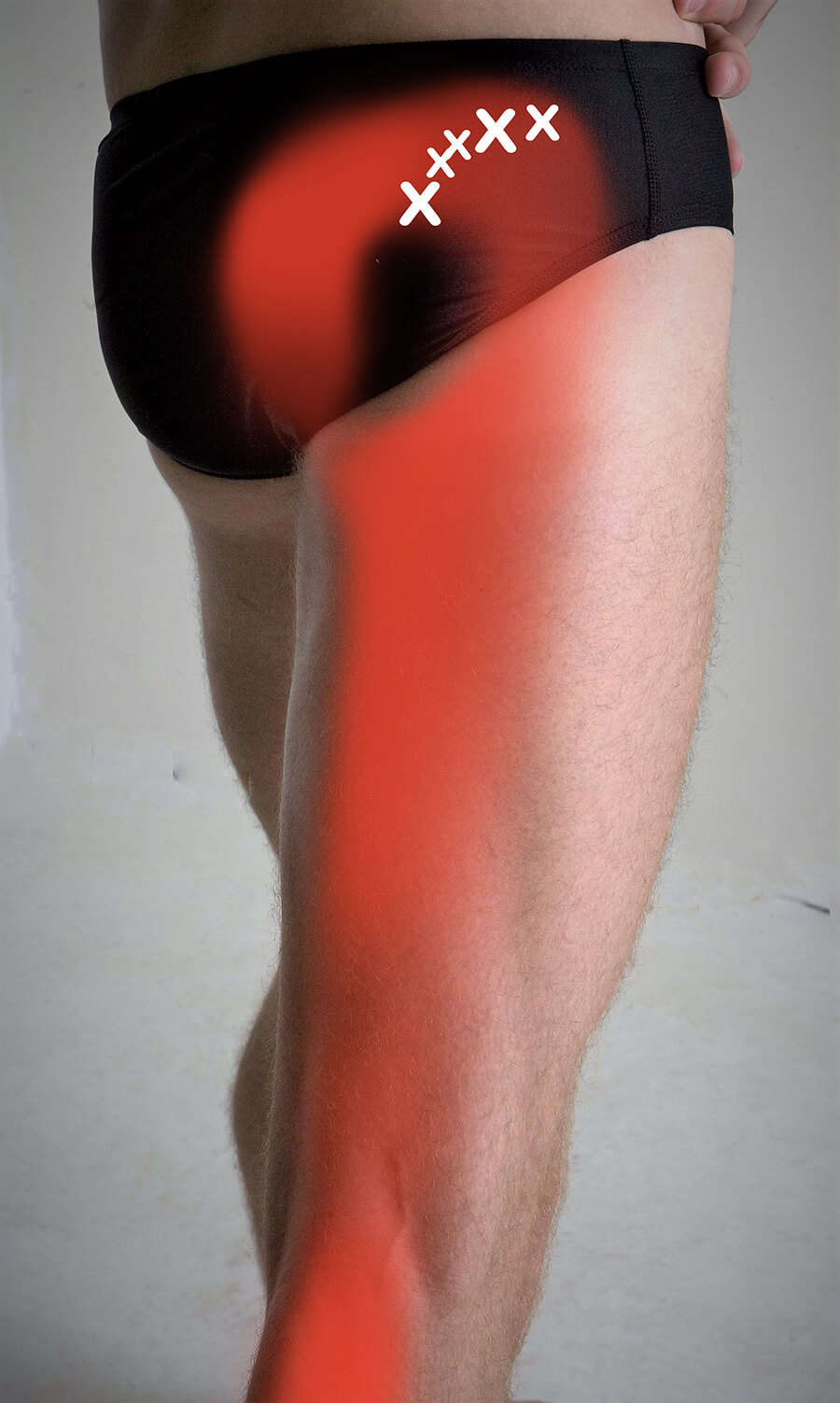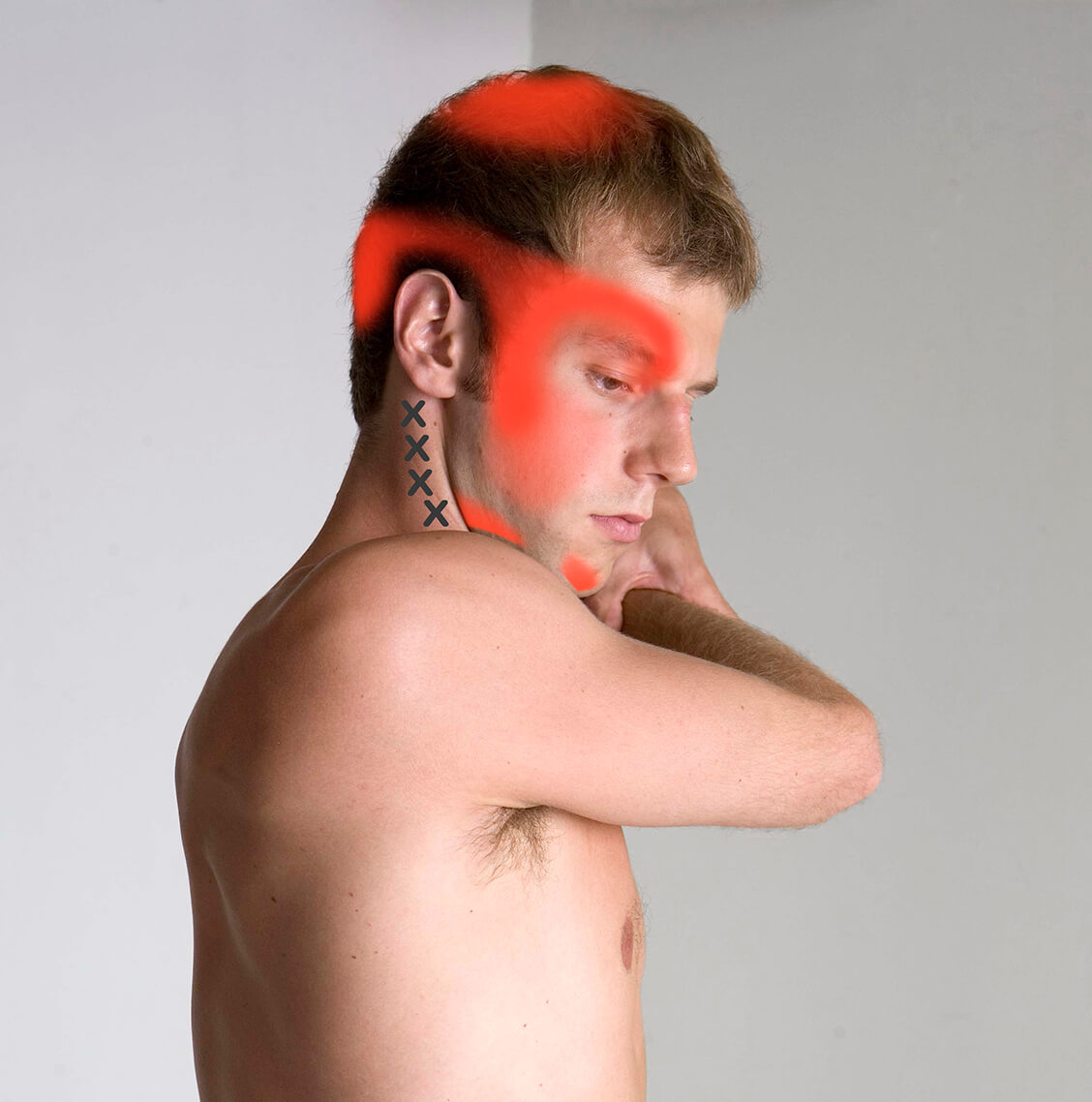TIGHTNESS, ACHING, & MORE
In the 1950’s Dr. Janet Travell discovered when muscles are
traumatized through accidents, sports, occupation, or disease,
myofascial trigger points are formed in the muscles. Tightness, aching,
sore, and painful muscles, and fascia usually take years to develop.
Myofascial pain and dysfunction is cumulative over all the years you
have lived. This means surgery or a fall or injury you sustained as a
child can be part of the discomfort you are experiencing now. And of
course, the recent injury from a Motor Vehicle or Workers
Compensation Accident can not only cause immediate pain, but problems months—even years—later.
Dr. Travells’ research demonstrates that each muscle has a specific pattern of referred pain. This means a myofascial trigger point can produce pain (or triggering pain) in a predictable pattern, both where it is located and in another area of the body.
Since Dr. Travells’ original research on muscular trigger points, science has shown a significant relationship between the action and properties
of fascia and muscular trigger points. Fascia contracts to aid in movement but also can cause pain and restriction in movement.


